CAMP ERAWAN, Thailand - Paratroopers from 3rd Battalion, 509th Parachute Infantry Regiment stationed at Joint Base Elmendorf-Richardson, Alaska, and paratroopers from the Thai Army's 3-31st Infantry Regiment, King's Guard, traded urban warfighting tactics in a Feb. 12 exercise.
The joint Thai and U.S. force spent the day sharing everything from weapons to ideas and mission tactics at a military operations in urban terrain, or MOUT, training site at Camp Erawan, Thailand.
The two armies performed training drills covering everything from clearing an enemy room to reacting to contact drills in a town setting.
The training was part of Cobra Gold 2011, a regularly scheduled joint and coalition multinational exercise designed to ensure regional peace and stability. The exercise also strengthens the Thai government's self-defense capabilities and its ability to respond to regional contingencies.
"We're not here to impose our methods on the Thai Army," said 1st Sgt. Richard C. Wiley, first sergeant for A Co., 3-509th as he observed members of his company training alongside Thai soldiers. "We're here to share our tactics and see theirs too."
As the U.S. and Thai troops studied each others' methods, they discussed and evaluated the differences and noticed how each one had adopted a style best suited for their particular expected situations.
"American MOUT is very fast," said Sgt. Bernard Benjamin, acting squad leader in 2nd Platoon, A Co., 3-509th. "We move so our enemy doesn't have time to react. The Thai look more deliberate in their movements to me."
Along with training inside of buildings, the joint force also traded tactics on how to move through an urban environment while maintaining full security.
"You almost can't tell the difference between the two on a lot of what we train on," said Staff Sgt. Justin Smith, a squad leader in 2nd Platoon, A Co., 3-509th. "But it's those subtle differences that are always good to have on hand in a MOUT situation. You have to continually think outside the box."
The training ranged from large platoon- and squad-sized elements to one- to two-man operations such as the enemy, personnel and weapon search, or EPW.
Spc. William O'Kelly, a squad automatic weapon gunner, and Spc. Kyle Schultz, a rifleman, both with 2nd squad, 1st Platoon, "Able" Company, 3-509th demonstrated the technique on another U.S. volunteer as Thai soldiers watched closely. They then swapped roles and discussed why each force uses a slightly different method.
Spc. Timothy Robbins, a team leader in 1st Platoon, A Co., 3-509th volunteered to be the subject of the Thai EPW search.
After a brief struggle where it seemed his thicker frame may have been an advantage, Robbins quickly tapped the floor and gave up all resistance.
"I'm not exactly sure what they just did to me, but it was excruciatingly painful," Robbins said as he recovered from a takedown and ankle lock. "As soon as they cinched it in I had absolutely no more desire to resist whatsoever."
The Thai and U.S. forces finished the day by playing out assaults on the MOUT training area and exchanging methods and tactics.
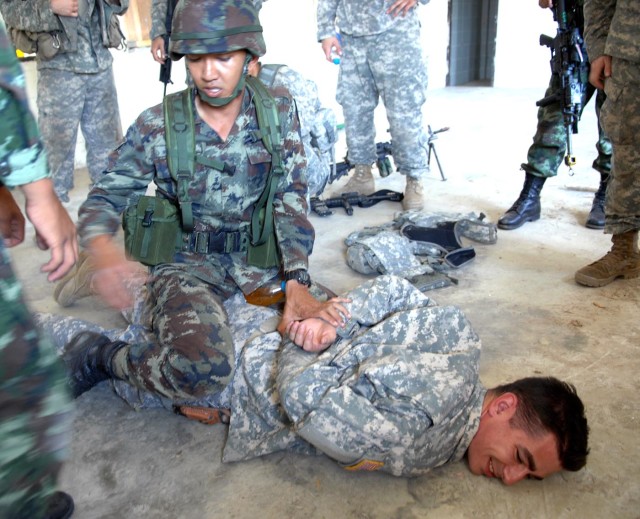
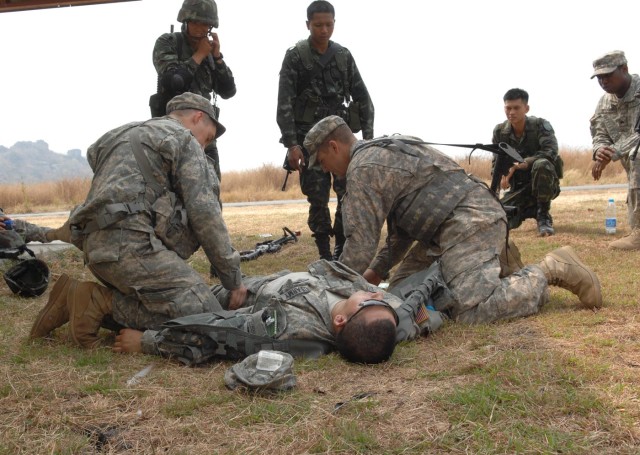
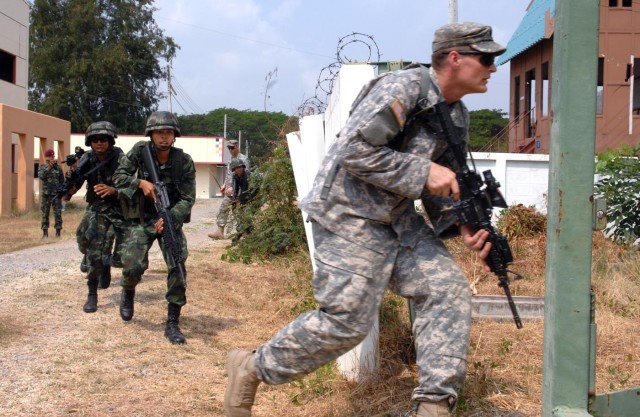
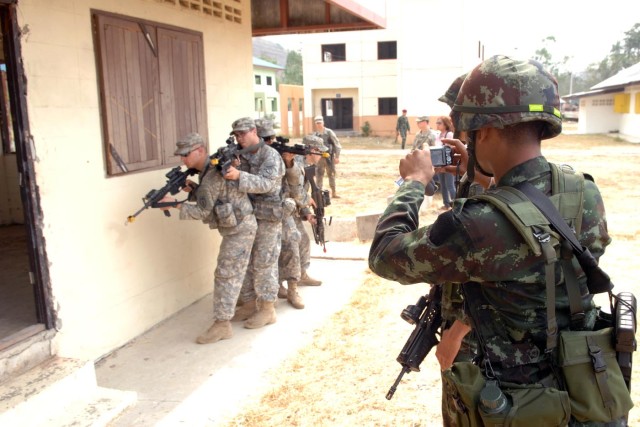
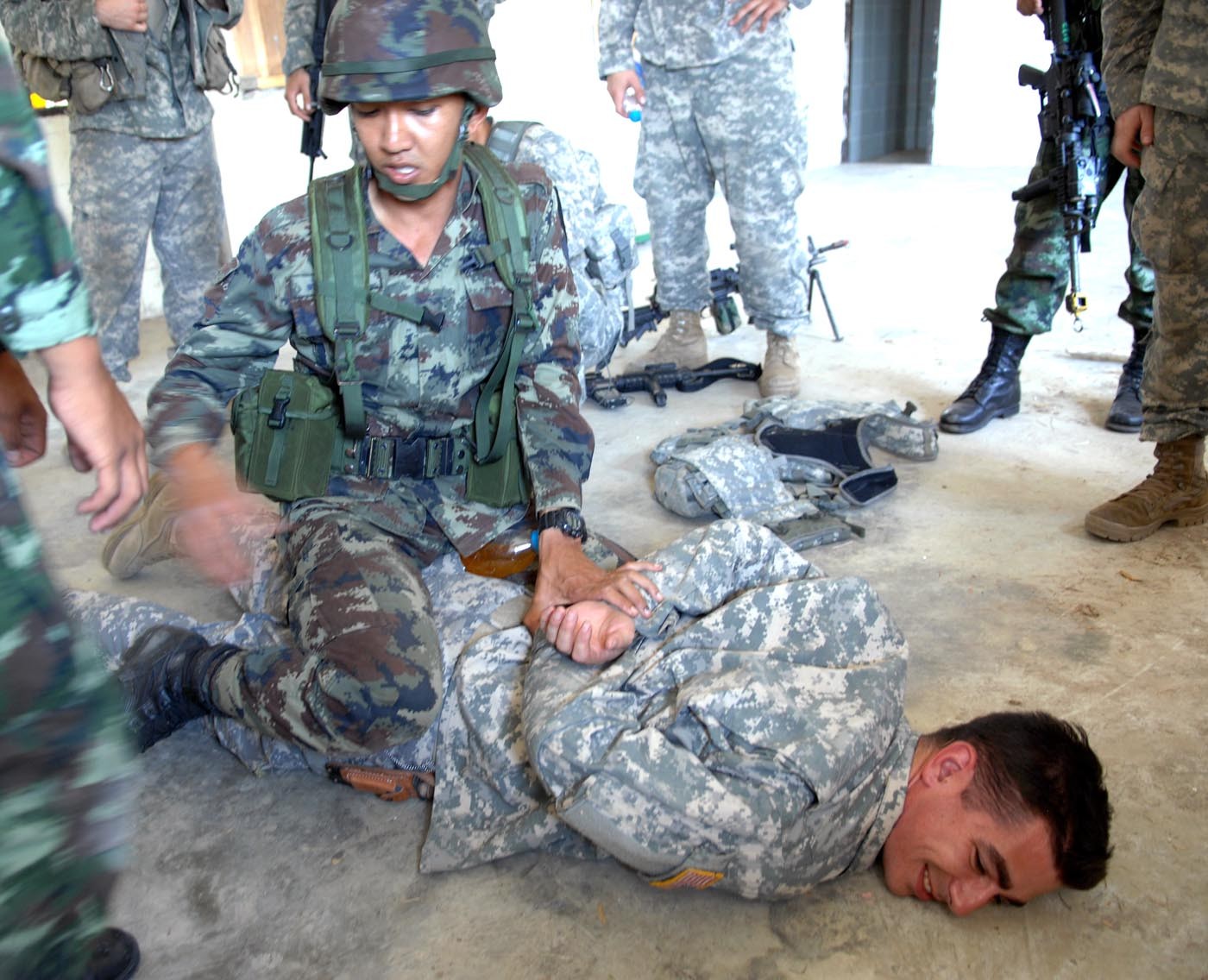

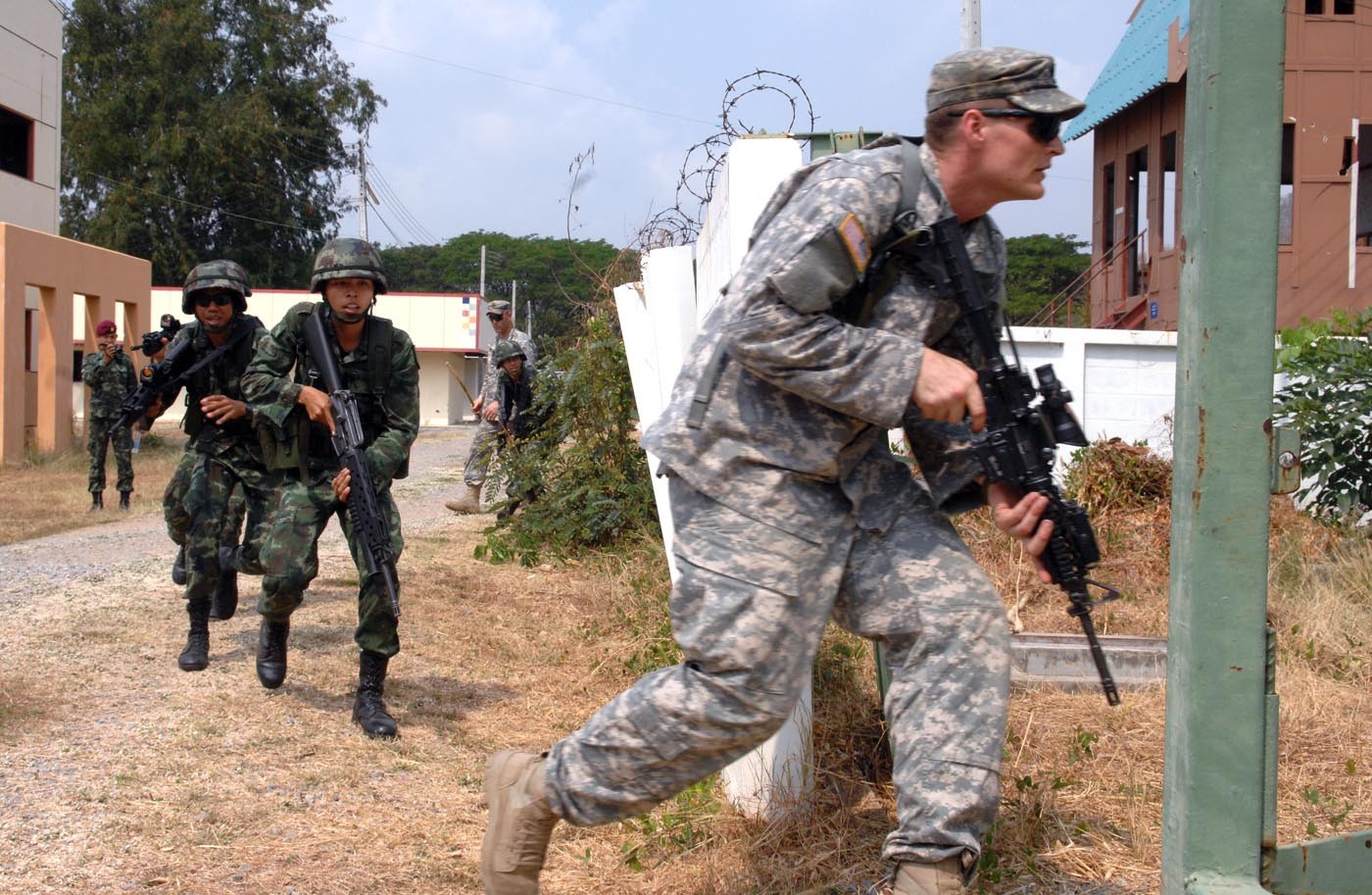

Social Sharing